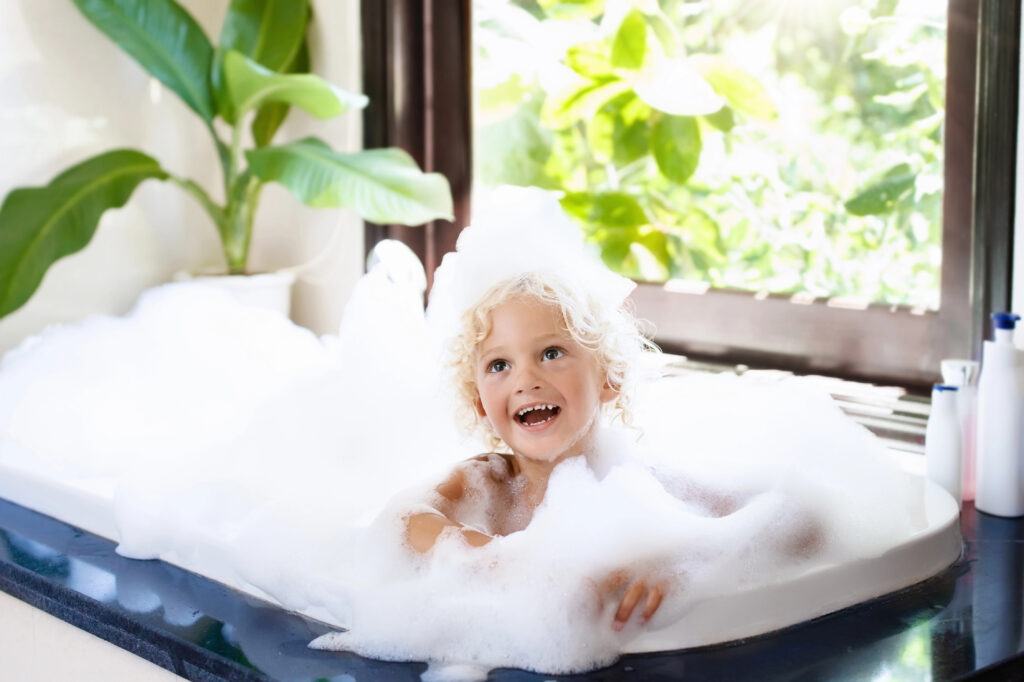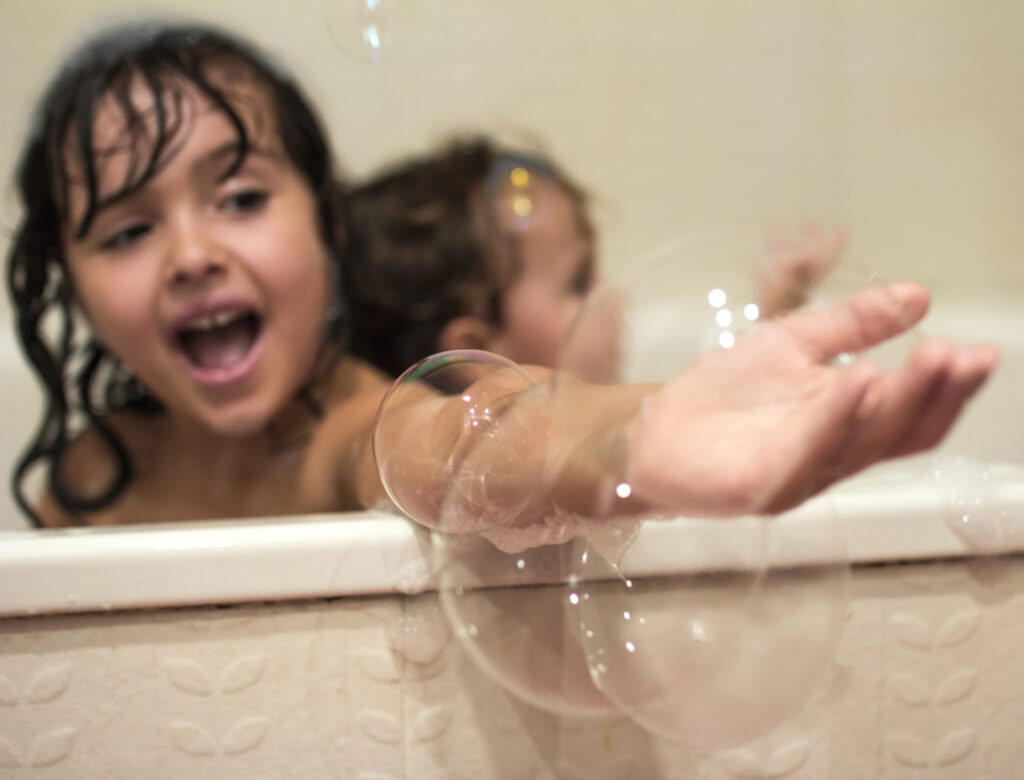
In our house, bath time was always a bit like Vietnam; we never knew what we were going to get, and chances are we were in over our heads. You either get a battle for the ages getting them in or out of the tub, or a quiet time while kids play and splash in the water. That led to very strategic choices about the day, time, and frequency of baths.
Parents may find some relief in new research and updated guidelines from Canadian dermatologists and the American Academy of Pediatrics that recommend short baths with mild cleaners, and, most importantly, only when needed, followed by moisturizer. According to the organizations, studies have shown that bathing infants often can lead to skin barrier dysfunction. The skin’s natural mechanisms for retaining moisture and keeping irritants out can be compromised by frequent bathing.
Celebrity couples like Dax Shepard and Kristen Bell, and Ashton Kutcher and Mila Kunis, have admitted they don’t usually bathe their kids unless they see dirt. This was met with a lot of criticism from parents who viewed bath time as a daily, if not regular, occurrence. The question then becomes, how often should kids be in the tub?
Dr. Benjamin Barankin, the medical director and founder of the Toronto Dermatology Centre, told Today’s Parent that for most kids, a bath every 2-3 days is fine until puberty sets in. But as kids age, things will ebb and flow. Obviously, regardless of frequency, if a child is dirty (as kids tend to be), it’s ok to bathe them.
Bath Time Doesn’t Need To Be Daily In Kids 0-3+ Years Old
Generally speaking, newborns do not need daily full baths. Usually, two to three times a week is enough unless they are visibly dirty, or have a blowout (you know what I mean). A newborn’s skin is the most sensitive, so it’s essential to keep it clean using gentle, fragrance-free cleaners or even just lukewarm water for very young infants.
As babies grow, they obviously become more mobile and start eating solid foods (6-12 months old). This will probably mean their need for baths will increase, but it’s still not necessary to bathe them daily. The pattern of two to three full baths per week still holds, but feel free to wash them if meal or playtime gets particularly messy.
Once they hit the toddler stage (1-3 years old), kids are much more active and curious, which makes them more prone to getting dirty from play, food, and other activities. Still, at this stage, three to four baths per week should work, but it could increase to daily depending on the child’s activity level. At this stage, it’s time to start working to make bath time a fun and consistent part of their routine. This can help with sleep and relaxation, and maybe even give them something to look forward to at the end of the day.
Once children enter preschool (3+ years old) and school, germs and physical activity are just about everywhere. It might not be a bad idea to have shorter daily baths at this point to keep potential “Daycare Drip” germs at bay. This is a good time to start instilling proper hygiene habits in your child and to illustrate the importance of washing hands, armpits, groin, and feet.
Bath Time Isn’t Just About Getting Clean

Bath Time is a great one-on-one time with your kids. It not only creates a relaxed and fun environment with minimal distractions, but also helps establish a routine that can make the other daily battle, bedtime, easier.
Bath time can also be soothing for over-stimulated kids and encourages sensory development as they splash around with toys, bubbles, and the water itself. It also provides parents a great doorway into teaching kids about their bodies, water safety, and of course, the benefits of washing. In our house, it was a great time to listen to music, too.
With fewer distractions and less chance of them running off, bath time became a time for my family to start talking about several things in an environment that seemed to let us reach them more easily.
Kids Have Naturally Sensitive Skin, So Moisturize
The Toronto Dermatology Centre says that science shows that young kids have softer, thinner, and more sensitive skin than adults. This means that they need to be kept clean, but over-bathing can lead to irritation and moisture loss, which can put kids at risk for conditions like eczema. Frequent bathing and the use of harsh soaps or hot water can strip the skin of its natural oils and protective barriers. Also, exposure to certain benign microbes is beneficial for immune development.
The best practices for bath time include using lukewarm water (test with your wrist or elbow) and limiting baths to 5-10 minutes. Pat the child’s skin dry with a clean towel, and moisturize within 3 minutes to retain hydration. Also, it should go without saying, never leave a child unattended in the bath, even briefly. This means that you should keep your bath supplies within reach so you don’t have to leave the room.
Obviously, just like kids themselves, there’s no one-size-fits-all answer to bath frequency. Your kid’s age and activity level will determine how many baths they take, but no matter the age or situation, it’s best to prioritize skin health over daily scrubbing and adjust the bath-time routine accordingly.
